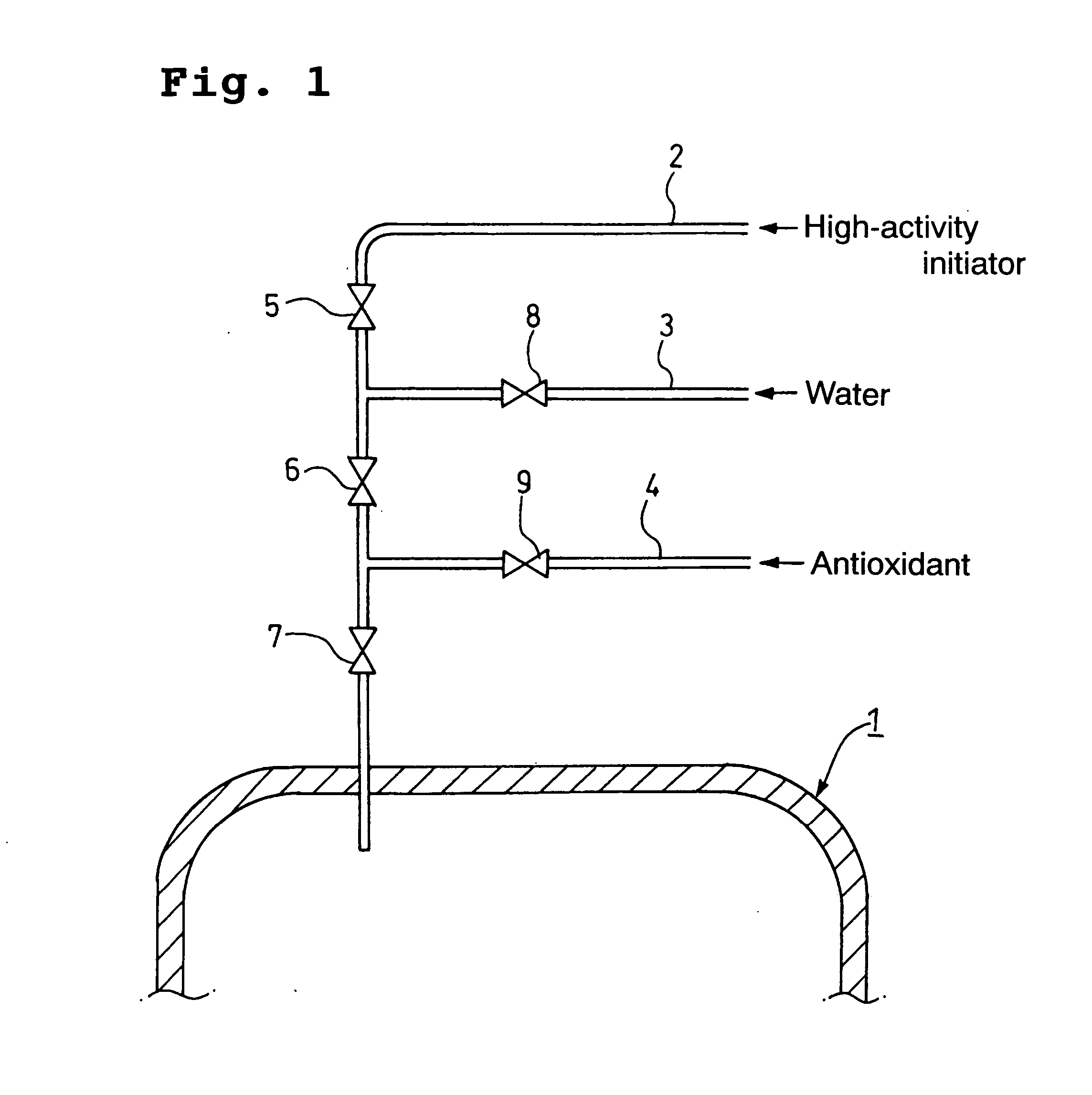Process for producing vinyl chloride polymer
a technology of vinyl chloride and polymerization initiator, which is applied in the field of vinyl chloride-based polymer production, can solve the problems of limited polymerization vessel heat removal, limited polymerization initiator quantity, and limit to how much polymerization time can be shortened using this method, so as to reduce the quantity of polymerization initiator remaining within the product polymer, reduce the quantity of polymerization initiator supply pipe, and prevent the generation of polymer scal
- Summary
- Abstract
- Description
- Claims
- Application Information
AI Technical Summary
Benefits of technology
Problems solved by technology
Method used
Image
Examples
example 1
[0068] The following description is based on FIG. 1. With the valves 5 to 9 closed, a polymerization vessel 1 of internal capacity 2 m3, fitted with a reflux condenser, was charged with 856 kg of deionized water, 206 g of a partially saponified polyvinyl alcohol with a saponification degree of 79.5 mol %, and 137 g of hydroxypropylmethyl cellulose with a methoxy substitution degree of 28.5% by mass and a hydroxypropoxy substitution degree of 8.9% by mass. Subsequently, the inside of the polymerization vessel 1 was degassed until the internal pressure reached 8 kPa, and 685 kg of vinyl chloride monomer was then added. With the mixture undergoing constant stirring, 760 g of a 50% by mass aqueous emulsion of di-2-ethylhexyl peroxydicarbonate (10-hour half life temperature at a concentration of 0.1 mol / L in benzene: 43.4° C.) was added as a polymerization initiator (1), while a temperature raising process was started by passing hot water through the jacket, and when the temperature insi...
example 2
[0072] With the exceptions of altering the quantity added and the rate of addition of the isobutyryl peroxide aqueous emulsion of the polymerization initiator (2), and altering the polymerization conversion rate at the point where reflux condenser heat removal was commenced as shown in Table 1, a vinyl chloride-based polymer was produced in the same manner as the example 1, and then subjected to the same measurements. The results are shown in Table 1.
PUM
| Property | Measurement | Unit |
|---|---|---|
| Temperature | aaaaa | aaaaa |
| Fraction | aaaaa | aaaaa |
| Percent by mass | aaaaa | aaaaa |
Abstract
Description
Claims
Application Information
 Login to View More
Login to View More - R&D
- Intellectual Property
- Life Sciences
- Materials
- Tech Scout
- Unparalleled Data Quality
- Higher Quality Content
- 60% Fewer Hallucinations
Browse by: Latest US Patents, China's latest patents, Technical Efficacy Thesaurus, Application Domain, Technology Topic, Popular Technical Reports.
© 2025 PatSnap. All rights reserved.Legal|Privacy policy|Modern Slavery Act Transparency Statement|Sitemap|About US| Contact US: help@patsnap.com

